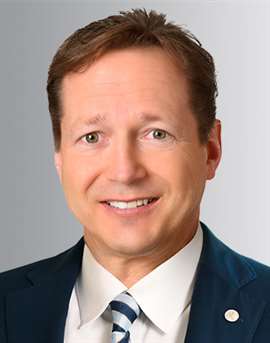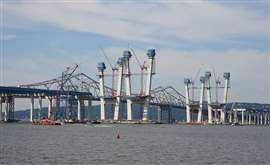Why Fluor sees good news in Trump and data centre ‘sweet spot’
11 November 2024
 Image: Sashkin via AdobeStock - stock.adobe.com
Image: Sashkin via AdobeStock - stock.adobe.com
US-based construction giant Fluor saw its profits and new awards decline in the third quarter of this year but nonetheless struck an upbeat tone in a call with investors last week.
The business reported revenue for the third quarter of US$4.1 billion, as compared to just under $4 billion in the same period the year before.
But net earnings dropped to $54 million in Q3, a marked decline from the $206 million it recorded in Q3 2023.
Total new awards also fell, dropping to $2.7 billion in Q3 2024, as compared to nearly $5 billion in Q3 2023. The drop in new awards in the company’s energy solutions arm was particularly acute, down from $3.3 billion in Q3 2023 to $1.5 billion in Q3 this year.
Here’s 5 things we learned from Fluor’s executive team about how the business views its current environment and future prospects:
1) Trump victory provides investment certainty:
Fluor’s chairman and chief executive David Constable briefly welcomed the fact that there has been a clear winner in the US presidential election, in the form of Donald Trump.
“This creates an environment of certainty that our clients need in order to make major capital investment decision,” he said.
And Joseph L Brennan, executive vice president and chief financial officer noted that the regulatory environment in the US could change with the arrival of Trump’s administration, with potential implications for Fluor’s energy solutions business, which serves chemicals, fuels (oil and gas), and energy transition clients. “What is it going to look like as we move forward? Is the regulatory environment going to be more favourable?” Brennan asked. “These are things that we’ll figure out as we move forward in the next two to three months as things become clear.”
2) Fluor hasn’t given up on small modular nuclear reactors (SMRs):
Fluor holds a majority interest in NuScale, which has been developing a small modular reactor (SMR) solution for years. It spun off NuScale as a publicly traded company in 2022 and indicated earlier this year that it may sell its stake to an unnamed ‘strategic investor’, which could drop its ownership below 50%. It indicated in the earnings call that the deconsolidation of NuScale could result in a $1.6 billion gain for the company.
 David E. Constable, CEO of Fluor (Image: Fluor)
David E. Constable, CEO of Fluor (Image: Fluor)
Perhaps unsurprisingly, Fluor remains bullish about the prospects of SMRs, in spite of the termination last year of the Carbon Free Power Project in Utah, which would have seen the first NuScale SMR constructed in the US. The company is the first to receive a design certificate from the Nuclear Regulatory Commission (NRC) in the US and has recently reached the next phase of engineering and design work for an SMR in Romania.
James R. Breuer, Fluor’s chief operating officer (COO), said, “The incredible excitement surrounding the use of SMRs as a carbon-free solution for data centres is turbocharging NuScale’s commercial model. The timing could not be better for our investment. We are pleased with the progress made to date with the strategic investor and we’ll be taking actions in the first half of 2025 to capture a portion of this value for Fluor.”
Constable added that the market potential for NuScale SMRs to provide carbon-free power to industry and utilities is “massive” and that the company is committed to supporting the build-out of NuScale projects globally. “Remember: NuScale is the only US NRC-approved SMR technology in the market. There are a lot of smoke and mirrors out there. If [other technologies] ever get approved, they’re years and years behind NuScale. So, that’s a fact unless you want to go to Russia or China,” Constable added.
3) Data centres are a ‘sweet spot’ for Fluor:
Constable was especially positive about the opportunities that continued high demand for data centre construction presents for the company’s Urban Solutions division.
He described the market segment as a “sweet spot” in terms of Fluor’s size and supply chain requirements and said he expected strong growth in the market in the first half of 2025 to reflect the company’s clients’ expanding capital expenditure plans.
Fluor is working on “several competitive advantages” to keep ahead in the space, including developing new cooling process concepts and working with a client for offsite modularised design and production processes that should speed up the construction of data centres, he said.
Meanwhile, Breuer said Urban Solutions would be Fluor’s “primary engine of growth” in the short term thanks to a glut of EPC work in data centres, as well as for pharmaceutical companies and mining.
4) A billion-dollar legal battle over bridge rages on:
Constable noted that last month, the Tappan Zee Constructors (TZC) consortium, in which Fluor is involved, sued the New York Thruway Authority over nearly $1 billion of disputed costs on the Mario M. Cuomo Bridge.
 The Mario M. Cuomo Bridge (also known as the new Tappan Zee Bridge) under construction in 2016 (Image: Jim.henderson, CC BY 4.0 via Wikimedia Commons)
The Mario M. Cuomo Bridge (also known as the new Tappan Zee Bridge) under construction in 2016 (Image: Jim.henderson, CC BY 4.0 via Wikimedia Commons)
It’s the latest episode in a three-year-long legal battle that two months ago saw the Thruway Authority file a lawsuit that claimed dozens of anchor pipes used to connect cables on the $4bn twin span bridge in New York were not up to standard.
The bridge opened in 2017 but four years later, Tappan Zee Construction sued the Thruway Authority amid claims it owed them nearly $960 million in costs. It dropped the lawsuit and the two parties entered a dispute resolution process which has so far failed to find a compromise.
Constable said, “In October, our JV consortium that built the Mario M. Cuomo bridge filed a $1 billion breach of contract lawsuit against the New York State Thruway Authority for costs incurred before the bridge was successfully completed six years ago. Despite there being a clearly outlined dispute resolution process in our contract, it is disappointing that the New York State Thruway Authority has chosen to delay its liability for this bridge.”
5) ‘Foot coming off the energy transition pedal’ in the US:
The transition from fossil fuels to low-carbon forms of energy is moving more slowly than expected in the US, according to Fluor.
Constable noted that as several engineering, procurement and construction (EPC) projects in energy solutions are working on wind down, the expected conversion of front-end engineering design (FEED) packages to new EPC contracts “has not yet come to fruition”.
Expanding on his comments later in a call to investors, he said. “It feels like the foot is being taken off the energy transition pedal somewhat, primarily in North America. In energy transition, the stars really have to align completed for energy transition projects to get to FID [their financial investment date] in North America.”
On the other hand, he said, there was the prospect of significant energy transition activity in Europe. “We have five energy transition EPCM projects in progress and four of those are in Europe,” he said.
CONECTAR-SE COM A EQUIPE





